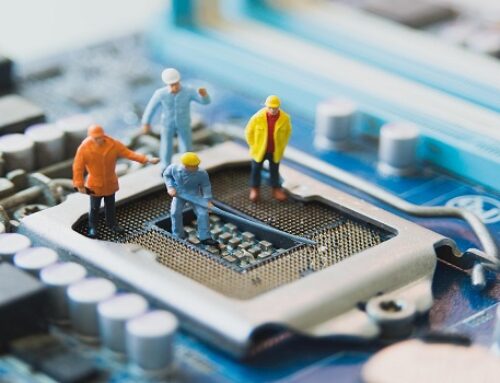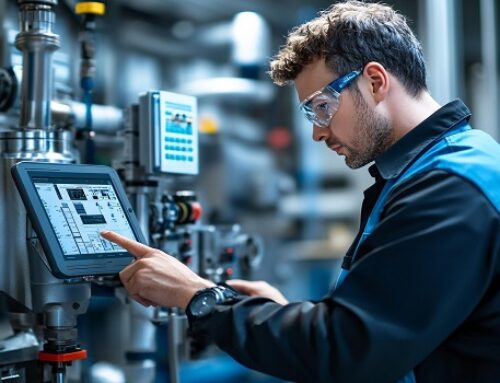
It goes without saying that the brain is a complex tool, so the errors made within an industry are generally linked to misinterpretation or lack of attention. It should be known that on a daily basis, we mainly use our brain’s left hemisphere. Reading an operating mode that is mainly composed of a text uses this very same part. In conjunction with the realization of tasks, it also causes cognitive overload which significantly increases the human error.
However, pictures and videos are mainly used by the right hemisphere. They require less cerebral work to be visualized. “A study by the University of California demonstrates that neural commitment is increased by using work instructions mainly comprised of photos and videos in comparison with those mainly using texts”
The conclusions of this study highlight that the use of pictures and videos ensures operators a better focus and a better use of their brain. It also significantly reduces the risk errors.
Opting for visual aids in operating modes?
Obviously, here we are going to talk about the necessity of setting up a visual management strategy. A real Lean tool, it represents work processes via visual aids in order to facilitate the transmission and circulation of information. The primary goal of this type of management is to be as close as possible to operators by facilitating data communication.
Using pictures and videos in operating modes offers several advantages that aim to improve the transmission of information as well as work quality. In fact, this helps to collect the generally scattered data, limit errors and automate real time information update.
The errors made in a factory are often linked to misinterpretation
According to multiple studies, the information transmitted by a picture or a video turns out to be better perceived, understood and retained. Note that more than 60% of the population has a dominant visual memory. Therefore, we can say that visually delivered information is better assimilated than information on a written aid.
Thus, the use of visual aids helps to significantly improve communication and understanding of operating modes within a factory.
Opting for operating modes in the form of photos and videos helps to reduce errors and thus waste. For example, it is recommended to place important information for the execution of work on a visual support on a wall just above the workstation. This helps not only to avoid misinterpretation but also waste of time. Indeed, a visual format of operating modes gives a visual cue to the operator as he knows exactly what to act on.
The operating modes are not sometimes widely read
Generally, in a workshop, it is not very easy to have employees read the operating procedures which are very often quite long and very detailed. In fact, going through detailed texts with several steps leads to a potential lack of interest and attention on the part of the reader.
Moreover, the volume of instructions is difficult to suit their own use. In fact, long and textual operating modes are not able to guarantee the expected performance regarding deadline and product quality.
The objective behind setting up operating procedures in visual format is to ensure a better use of resources. Indeed, every document comprising visuals and computer graphics catches attention and ensures quick commitment.
Ensure consistency between information and operation
You should know that the strategy of using photos and videos in operating modes is based mainly on the fact that the majority of people assimilate information with eyes. In fact, according to scientific studies, our brain needs only 150 milliseconds to assimilate a picture and associate it with significance.
Hence, integrating visual operating modes within your workshop will allow operators to assimilate them quickly without wasting time. This also guarantees the proper application of the tasks requested. The most important thing is to place visuals demonstrating clearly the procedures to be followed to reduce the margin of error. In other words, we can say that using visual aids helps to save time and ensure efficiency.
A simpler update
It is obvious that the environment in which the company operates is as much evolutionary as dynamic. This explains the regular modification and change of operating modes to take into account the new operating conditions.
Operating modes are likely to be modified regularly. This will definitely be a huge problem if you have classic paper documents.
Updating paper-based operating modes will require a great deal of work and thus waste of time. You will be then obliged to remove older versions from circulation to make sure that no operator uses it to do their job. Then, you will have to redistribute the new models and make sure that all operators have them. All these procedures therefore involve the mobilization of both human and material resources, time and energy.
Therefore, it is important to opt for visual aids to facilitate the task of data update. Indeed, managers and team members can therefore easily update operating procedures.
Moreover, if your operating modes are modified, you will not have to produce long and detailed editorial content. Quickly edited simple photos and videos will directly replace the old ones by informing all users of the changes made.
Picomto, a software specialized in digitalizing operating modes is your ideal solution that helps you reduce human error. Indeed, it is able to provide digital operating modes that help to give the right information to the right person at the right time.




Leave A Comment